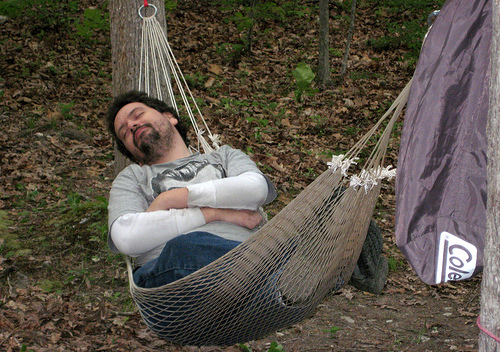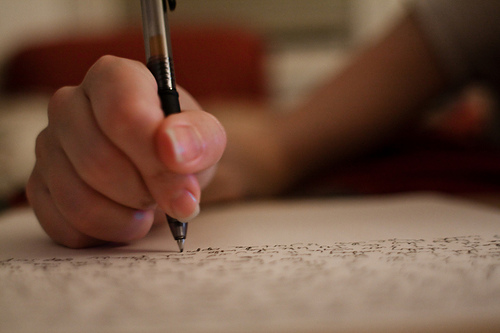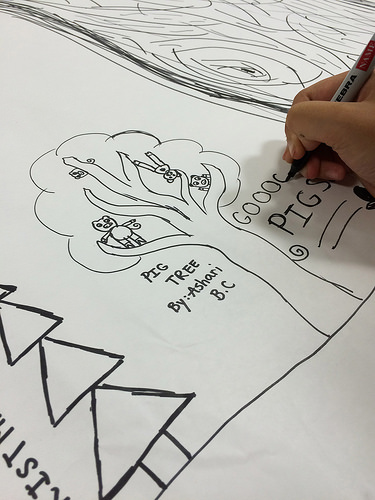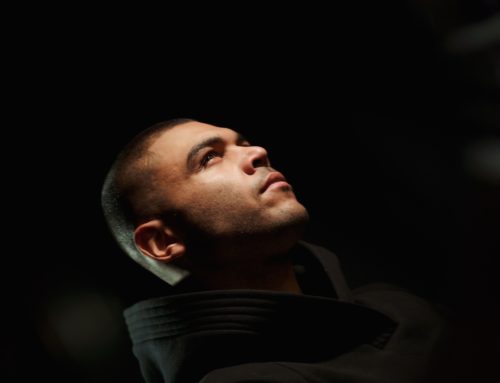Lacking inspiration? Six ways to kick start your brain
November 27, 2014
Do you ever find yourself lacking in inspiration, trying to solve a problem or make sense of a situation but coming up with nothing? I think it’s a fairly common experience and one I faced when I realised I’d need to write a blog for November and had absolutely no ideas – until it occurred to me to write about what to do when you have no ideas. So here are six psychologically proven ways to kick start your mind…….
Move
The last place you’re likely to come up with ideas is hunched over a laptop. After listlessly flicking between browser tabs hoping inspiration would strike, I came up with the idea for this blog on a brisk walk to the station. There’s now quite a lot of scientific evidence that movement helps with creativity and that fitter people are more creative in general. If you have the opportunity to go for a walk, then take it. It’s harder if you work in an office, but a long detour to the coffee machine may help. And if you’re chained to your desk, there’s even some evidence that moving your eyes from side to side improves creativity by increasing connectivity between your two brain hemispheres – though not if you’re ambidextrous, as your left and right hemispheres are already well-connected.
Idle
One of the reasons I came up with this blog idea on my way to the station is that I wasn’t consciously thinking about it. My mind was just ticking over. It’s almost a cliché for people to say that they have their best ideas in the bath or waiting for a bus or loading the dishwasher, but that doesn’t make it any less true, as a mass of research has shown. It seems to be incredibly important for our brains to have these idle moments. So if you’re a manager, don’t automatically penalise people every time they stare into space.
It’s almost a cliché for people to say that they have their best ideas in the bath or waiting for a bus or loading the dishwasher, but that doesn’t make it any less true, as a mass of research has shown. It seems to be incredibly important for our brains to have these idle moments. So if you’re a manager, don’t automatically penalise people every time they stare into space.
As early as 1926, a psychologist called Graham Wallas suggested a four-stage model of creative problem solving, which still seems to hold up today. The stages are:
1. Preparation
2. Incubation
3. Illumination or insight
4. Verification
The incubation stage is the bit where your mind idles before moving on to stage 3, the ‘aha moment’ while you’re putting the bins out. You can then logically work out whether your idea will work (stage 4 – verification).
But let’s not forget stage 1. You’re not going to incubate a problem you’ve given no conscious thought to at all. I could let my brain idle for the next decade and I wouldn’t come up with ideas on how to cure cancer because I know nothing about it. So do your preparation. Think about what you already know about the situation from as many angles as you can to give your unconscious mind something to work with. Which brings us to the next suggestion…..
Reframe
One of the reasons we get stuck is that we tend to think of problems within fairly narrow constraints – the proverbial ‘box’ we are always being encouraged to think outside of. But it’s easier said than done. One way to remove constraints is to imagine that it’s someone else’s problem. This seems to give us permission to step outside the situation and see it from a broader perspective.
Creativity researcher Keith Sawyer recommends writing 10 variations of the same question, quickly, without overthinking it. For example, for a question such as “How can I build a better mousetrap,”(something I’m sure we all struggle with) you might ask questions such as “How do I get the mice out of my house?” and “What does a mouse want?” or “How can I make my backyard more attractive to a mouse than my house?” It gives you different perspectives on the problem.
One of the key mental blocks to get around is ‘functional fixedness’, where we can only see an object in terms of its original purpose. That’s what all those ‘25 uses for a brick’ exercises are about. I’m not entirely sure how much use it is to think deeply about alternative uses for a brick if bricks are unlikely to feature in your solution, but they may train you to see past functional fixedness. Finding analogies between your situation and something entirely different is often the way to solve problems. Here’s a great example of someone solving a problem with malfunctioning skis by thinking about violins.
Write
Writing can really help you to clarify your thoughts and generate ideas but not if you’re trying to create perfect prose.  Free writing is a technique where you set a writing limit – e.g. 5 minutes or 2 pages – and keep writing without stopping or censoring yourself. So no staring into space while you think what to put next. Just keep the pen moving, even if what you write is along the lines of “I don’t know what to put next why am I doing this its rubbish” (you can let the rules of spelling, grammar and punctuation go out the window; no one’s going to see it).
Free writing is a technique where you set a writing limit – e.g. 5 minutes or 2 pages – and keep writing without stopping or censoring yourself. So no staring into space while you think what to put next. Just keep the pen moving, even if what you write is along the lines of “I don’t know what to put next why am I doing this its rubbish” (you can let the rules of spelling, grammar and punctuation go out the window; no one’s going to see it).
Something will emerge. You just have to pick out the useful bits and disregard the rest. I’ve found it useful to pick one idea or theme from what I’ve written and then free write about that. Doing that two or three times gradually refines my ideas and is great for clarifying the key issues in a situation or working out what I’m really trying to say.
Draw
If writing is not your thing, maybe try drawing. You don’t have to be an artistic genius. You could get your ideas down in a diagram or mind map. Mind mapping is a great way to help you capture and categorise all the thoughts swirling round your head about a subject. More ideas may come to you as you’re going along. I start each week with a big ‘diagram of everything’, which I find helps me keep track of things better than a ‘to do’ list.
On the other hand, a freer form of drawing or painting may help you access thoughts and feelings you don’t consciously know about yet. I recall coaching a woman who had been made redundant from a creative job in the fashion industry. She was struggling to articulate her thoughts and feelings, so I suggested she try using art to make sense of her situation. She returned next time with a series of exquisite water colours that perfectly encapsulated her situation for her. They didn’t mean a whole lot to me, but that’s not the point. She didn’t paint them to communicate with me but to make sense of things for herself. So if you try painting or drawing, allow that same lack of constraint as in the free writing exercise. No one else needs to see it, so it doesn’t’ matter if your work has no artistic merit or would be meaningless to anyone else, so long is it helps you.
I recall coaching a woman who had been made redundant from a creative job in the fashion industry. She was struggling to articulate her thoughts and feelings, so I suggested she try using art to make sense of her situation. She returned next time with a series of exquisite water colours that perfectly encapsulated her situation for her. They didn’t mean a whole lot to me, but that’s not the point. She didn’t paint them to communicate with me but to make sense of things for herself. So if you try painting or drawing, allow that same lack of constraint as in the free writing exercise. No one else needs to see it, so it doesn’t’ matter if your work has no artistic merit or would be meaningless to anyone else, so long is it helps you.
Play
If you don’t want to write or draw, how about playing with objects? Some people love Lego. Personally, I find Plasticine is a fantastic medium for expressing creativity, particularly if you just play about with it and let shapes emerge, rather than setting out to make a car or a horse or whatever.
Alternatively, rather than creating new shapes, you can play around with existing objects. Take a bag of random objects – shells, earrings, small toys, etc – and a cloth. The cloth represents the situation and you choose objects to represent different elements of the situation or people involved and place them on the cloth without deliberating for too long. When you’ve finished, you can draw all kinds of insights from the objects you’ve chosen and their positioning. For example, what would it tell you about the power dynamics in a situation if you represented a client with a hefty chunk of rock and your boss with a feather? Have you placed yourself in the middle of the cloth or at the periphery and what does that say about how much involvement or responsibility you feel?
Of course, this is by no means an exhaustive list. I’d be interested to find out what you do to kick start your creativity………..
Photo credits
Hammock: Rev. Xanatos Satanicos Bombasticos (ClintJCL)
Writing: Rubin Starset
Drawing: Nicki Hambleton






I have read so many content about the blogger
lovers however this piece of writing is in fact a fastidious post, keep it up.